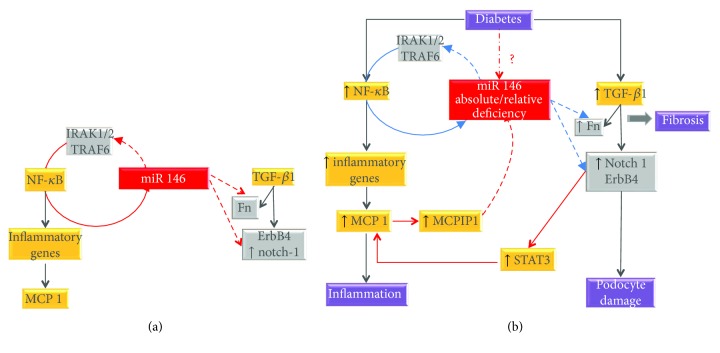Figure 1.
Role of miR-146a in diabetic microvascular complications. (a) In normoglycemic conditions, miR-146 is induced by NF-κB, and it inhibits NF-κB by suppressing its target genes interleukin-1 receptor-associated kinase 1/2 (IRAK1/2) and TNF receptor-associated factor 6 (TRAF6). Moreover, miR-146 represses expression of fibronectin (Fn) in retinal cells and ErbB4/Notch1 in podocytes. (b) In the presence of diabetes, there is an absolute/relative miR-146 deficiency leading to insufficient inhibition (light blue lines) of IRAK1/2/TRAF6 (enhancing inflammation), Fn expression (favoring fibrosis), and TGF-β1/ErbB4/Notch1 signaling (leading to podocyte damage). Enhanced signaling through the TGF-β1-ErbB4 pathway increases autocrine synthesis of MCP-1, further reducing miR-146a levels via MCPIP1 in a feed-forward loop. Grey boxes: miR-146 target genes; dotted lines: inhibition; continuous line: activation/induction.

